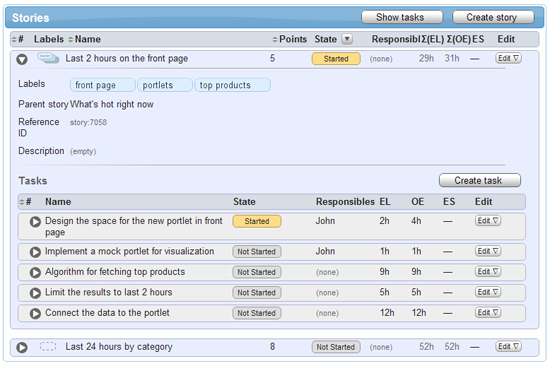

Agile project planning tools software#
Its roots run back to the 1950s and 1960s, but it really took off in the 1990s, when many Agile approaches to software development sprung up. History of the Agile MethodĪgile history didn’t begin with the Agile Manifesto. Adaptation, collaboration, trust, and open communication among the team participants are the heart of Agile.Įven though product owners or project leaders dictate how the work should be delivered, teams self–organize around minor tasks and assignments to determine how they will complete the work. So what are the main differences between Agile and Waterfall? While the traditional Waterfall approach demanded one person to contribute to the whole before moving it over to the next authority or contributor, Agile calls for the collaboration of cross-functional teams. Agile teams evaluate requirements, plans, and results continuously, meaning they have a regular procedure for responding to change quickly. Rather than depending on a big bang launch, a team submits work in small, but consumable, increments. At every stage, there’s continuous development and iteration.Īgile helps a team deliver value to their customers quickly and easily.

Through Agile, teams can manage several projects by breaking them down into different stages and constantly involving collaboration from stakeholders. Its ultimate goal is to inspire a flexible response to change.

In simple terms, Agile is an iterative approach to both software development and project management that hinges on constant planning, learning, development, teamwork, evolutionary improvement, and early delivery. It’s about teams understanding what’s going on in the environment, identifying what uncertainty they’re facing, and figuring out how they can adapt as they move along. According to the creators of the Agile manifesto, Agile represents the adaptiveness and responsiveness to change. It’s a way of addressing and eventually succeeding in an unpredictable environment. The Agile methodology of project management refers to the ability to build and act on changes. In addition, we will cover how companies can use Agile, as well as the tools they can use to implement Agile project management. We will break down Agile’s history, the 4 key pillars of Agile, and the 12 Agile principles. So how does Agile stand out from other project management methodologies ? In this comprehensive guide, we’ll tell you everything you need to know about Agile. This is where Agile project management comes in. Every technology company understands that the art of software development is unique - it requires the care and attention of an adaptable team who’s willing to act on changes quickly.


 0 kommentar(er)
0 kommentar(er)
